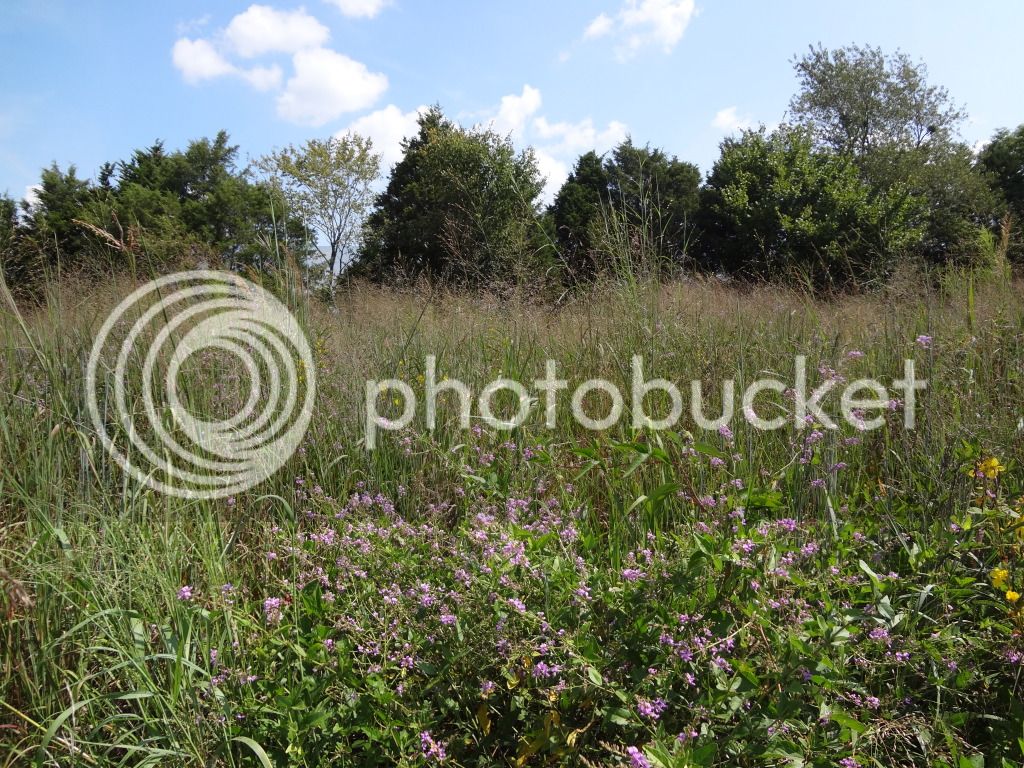I'm a huge supporter of native prairie (NWSG+wildflowers and legumes). The amount of biodiversity, and in general wildlife, that is supported in those plantings in just insane. Deer will find something to eat in them at almost every time of the year (not winter). As far as spring-fall habitat, I don't think it can really be beat. I was at a nature center a few summers ago and while a worker and I were walking through a native prairie planting we saw 6 does hop up and run away. This was in June/July, so I'd assume there were at least as many fawns in there as well. Where I hunt (Mid- Michigan), for April-October habitat, I'd put 5 acres of native prairie with a few thickets of hazels and american plum up against any single type of habitat (key word be single) for being the most beneficial for deer. Now, I say single is important because you need lots of habitat types for deer... but if I had to pick one that wasn't a mix of thermal cover and winter woody browse, that'd be it.
I'm a complete dork when it comes to native pollinators, and I openly try to incorporate xeriscaping into my habitat plans, I'll spare you on the native pollinator stuff, as I'm sure I'd be beating a dead horse. There is, however, almost always an in increase in beneficial predatory insects, which for me and my apples being grown for deer, is a huge plus. I also love that there is pretty minimal maintenance, or chemical input after establishment.
In my location, there are 10+ cornfields within 2 miles, so feeding deer and competing with those fields is pretty much hopeless. I've found that some rye or oats with clover and brassicas is a good attractant, but the deer will still be going to the fields at night. I've got one central plot that is about 1.5 acres, and this year I'm converting about half of that to native prairie. Part of that is to influence deer movement along the edge of that planting, but also part of it is because I don't think that extra 0.75 acre really gives any benefit to the deer. I'll have a strip of perennials (clover, chicory and small burnett) about 10 yards wide, flowing into a plot thats on my better soil. I'll drill rye/oats/peas/brassicas into the perennials each fall for attraction and hunting purposes, but that's about it.
Lastly (I know.. I've gone on quite a bit here...) I think that depending on the situation, these plantings can be a HUGE + . If you have horribly sandy soil that is pretty droughty, the long taproots on these plants will allow you to plant it, and leave it. If you have small spots that are just big enough to plant, but you don't want to worry about fertilizing and liming, these plants fit the bill. Edging of main plots, these plantings offer a great variety of height and cover, while still freely allowing travel to and from the plot. Overall, I wouldn't put 50% of my property in this stuff, but I do certainly think it is a critical piece of the habitat puzzle. You obviously need cover, mast, forage (food plots), general browse, and water, but the overall diversity of these plantings can allow you to provide at least two of those for half of the year. Other than the initial cost and PITA of establishment, I really don't see any negatives about this stuff.



